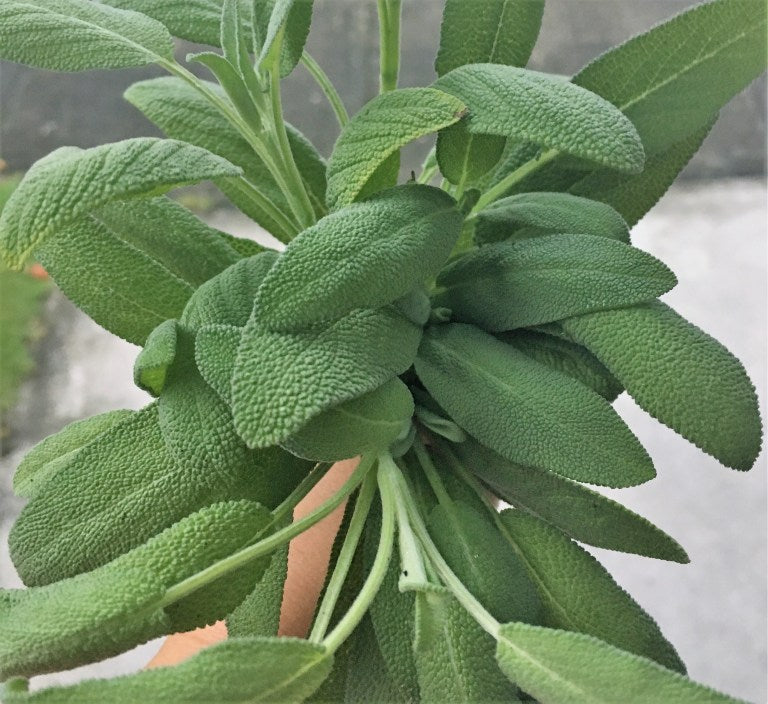
Growing Your Own Sage Definitely a Wise Move
Share
I don’t really know why it’s called such, but I must admit that growing your own sage in the garden is a wise move. The herb grows quite well in our tropical weather here in the Philippines. I simply sprinkled a few seeds in a medium sized pot and they all germinated successfully. In less than 3 months, you’ll be ready to harvest a few leaves which can be used for both culinary or medicinal purposes. It has an intense flavor that only a few leaves are needed to flavor the entire dish.

Sage will grow well with either full or partial sun exposure. Its flavor becomes more intense when it receives a lot of sunlight. It is a very sturdy plant and will perform well in medium sized containers filled with well-drained potting soil that is mixed with compost. Pests are almost non-existent because most insects are repelled by its strong scent.
As a perennial herb, the plant will continue to grow and produce strong favors for many years. Unlike most herbs, sage leaves will keep their strong flavor even after the plant has grown its flowers. Sage will benefit a lot from regular pruning which makes it even more prolific in producing new leaves. Fertilizers are rarely needed, and in fact, too much fertilizer may even cause this herb to lose its flavor and aroma.
How to propagate

Sage can be grown from seeds or through cuttings. In tropical zones, the seeds germinate in about 5- 7 days depending on the weather condition. However, germination takes a bit longer during cold weather conditions. For cuttings, the stem will typically grow its own roots in about 2 weeks. Wait another 2 weeks before exposing the herb plant to full sunlight, to avoid shock. Watering is needed twice a week (or more frequent during summer, when the soil feels dry).
Like basil, you can also grow their roots in water. Simply soak the tip of the sage cutting in unchlorinated water. Remember not to use a transparent glass or container when trying to root any cutting. Once the stem has grown some roots, it is ready to be transferred to a bigger pot. A 2-gallon pot is typically sufficient to grow a sage.
Harvesting
Regular pruning is advisable in order to encourage more new leaves to grow. Harvest the top leaves and to get the best concentration of flavors, ideally before mid-morning. The harvested leaves can be dried and stored in a paper bag for future consumption since only a handful of dried leaves are needed for the entire dish.
Uses of Sage

For culinary purposes, this herb goes well with most meat, including pork and chicken. Just a little goes a very long way. Chop a few leaves and sprinkle them over roast pork, beef or chicken. It also blends well with rosemary and thyme, or oregano for pasta sauces.
For medicinal purposes, sage has been known to treat digestive problems like flatulence (gas), gastritis, diarrhea, bloating and heartburn. I typically drop 2 leaves of this aromatic herb into a cup of boiling water like tea. Some websites also claim that sage can help prevent Alzheimer’s diseases. This herb is so wonderful, a ‘must try’ for any aspiring urban gardener.
